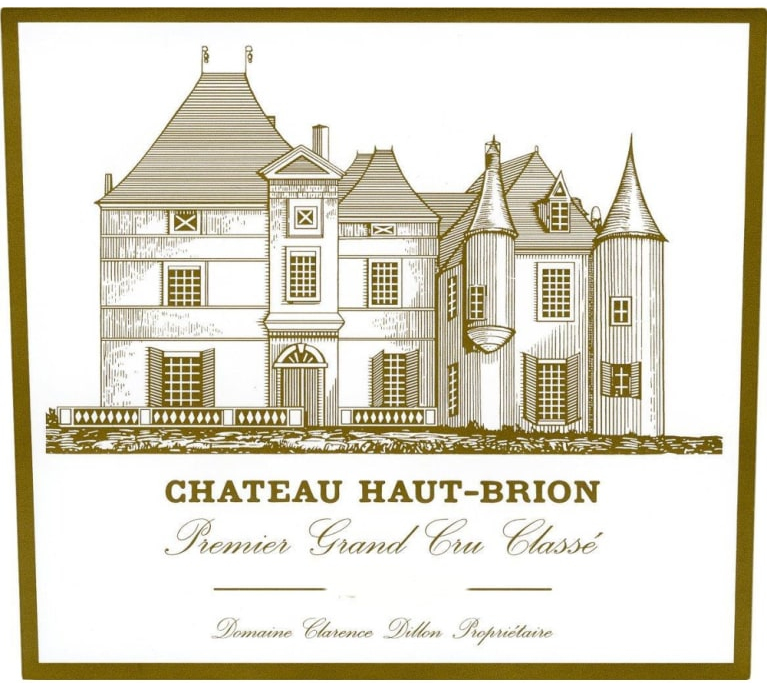Château Haut-Brion 2018
Review of the Estate
Château Haut-Brion is notable for its First Growth status, under both the 1855 and 1973 Mèdoc classifications, despite its geographical location in Graves. This mark of respect is due to the obsession with quality and continual winemaking improvements that have been the dominant modus operandi at Chateau Haut Brion over the past four centuries.
The modern estate grew from humble origins as a property known as Maison Noble d'Aubrion which was acquired by Jean de Pontac through his marriage to Jeanne de Bellon in 1525.
Pontac was responsible for expanding Chateau Haut-Brion, and creating an international market for the wines, the quality of which was noted by Samuel Pepys who wrote in April 1663,"here I drank a sort of French wine, called Ho Bryan, that hath a good and most particular taste that I never met with." However, Chateau Haut Brion was still known formally as Château Pontac until the late 18th Century when it eventually passed out of the Pontac family's hands.
As the first recorded First Growth to be imported into the United States, when Thomas Jefferson purchased six cases during his travels and sent them back to his home in Virginia, it is perhaps unsurprising that Chateau Haut-Brion was eventually purchased by an American. After a string of owners, financier Clarence Dillon acquired the estate in 1935. Chateau Haut Brion is currently owned by Domaine Clarence Dillon, which is a limited company and thereby prevents excessive divisions of the estate between successive generations. Presently, Prince Robert of Luxembourg is at the helm, with Jean-Philippe Delmas managing the viticultural aspects of the business.
As a First Growth, there is constant pressure to produce outstanding yet consistent wines and Château Haut-Brion has consistently embraced new technologies to meet this standard. In the 1960s, the estate pioneered the installation of stainless steel vats - the first of the First Growths to do so. This increased the reliability of the vinification process and positioned Chateau Haut Brion at the forefront of innovation in the Bordeaux region, producing a savoury wine which is both rich and intricate.

Vineyard
Surface area: 106.7 acres
Grape Varieties: 45% Cabernet Sauvignon, 37% Merlot and 18% Cabernet Franc
Average age of vines: 36 years
Density of plantation: 8,00 vines per hectare
Average yields: 35-45 hectoliters per hectare
Average cases produced: 11,000 per year
Plateau of maturity: 10 - 40 years
Château Haut-Brion 2018 Reviews / Tasting Notes
Lisa Perrotti-Brown - The Wine Advocate
Point Score: 100
The 2018 Haut-Brion is composed of 49.4% Merlot, 38.7% Cabernet Sauvignon and 11.9% Cabernet Franc. Deep garnet-purple in color, the wine needs a lot of swirling before it begins to release a whole complex melody of notes, one at a time to begin: tilled earth, followed by pronounced licorice, then crushed rocks, then the preserved plums. Eventually, it all comes together into a fascinating crescendo of intense creme de cassis, rose oil, wild blueberries and kirsch notes, giving way to quiet, persistent leitmotif scents of cinnamon stick, truffles and redcurrant jelly. The medium to full-bodied palate delivers all this and more, revealing tightly wound black fruit, red berry and exotic spice layers within a solid, wonderfully plush frame and seamless freshness, finishing with epic length and loads of earth and mineral sparks. This is a profound, highly intellectual, multilayered baby, which will require a good 7-8 years to begin to sing its incredible song, then should cellar a further 40 years at least. By way of reference, think 1989 with more restraint and even greater purity.
Decanter
Point Score: 98
Waves of cassis, cherry puree and blackberry paste roll through in this showstopper, with notes of tea, sandalwood, iron and anise providing an entourage for the fruit. A subtle warm earth accent underscores the finish without intruding on the texture. A large-scaled yet eminently refined wine. Merlot, Cabernet Sauvignon and Cabernet Franc. Best from 2025 through 2045.
James Suckling
Point Score: 99
Aromas of currants, leaves, fresh mushrooms, oyster shell, tobacco, and dried flowers, following through to a full body, yet ever so refined and polished and it grows on the palate. Lovely, energetic finish. Subtle and driven at the end of the palate. Drink in 2026 and onwards.